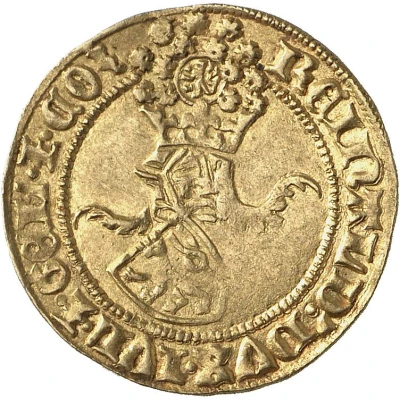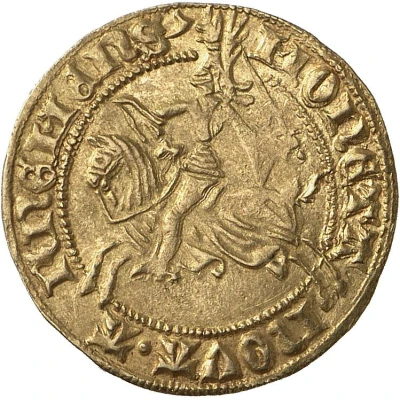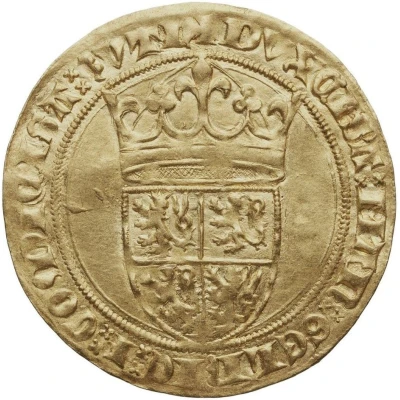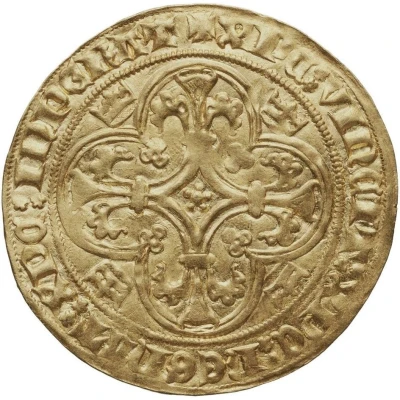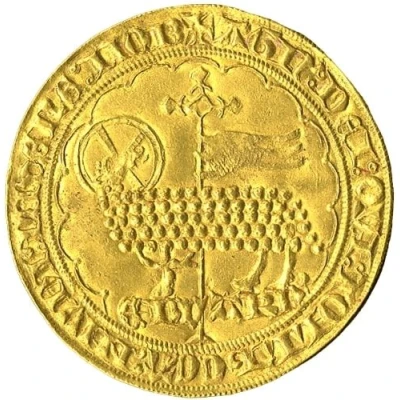
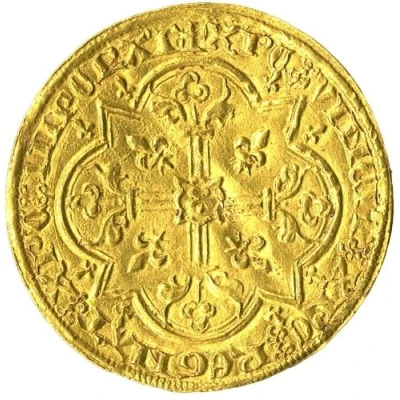

© Trustees of the British Museum
Agnel "Gouden lam" - Edward ND
| Gold | 4.61 g | - |
| Issuer | Duchy of Guelders (Dutch States) |
|---|---|
| Duke | Edward (1361-1371) |
| Type | Standard circulation coin |
| Years | 1358-1371 |
| Value | 1 Agnel |
| Currency | Groot (1046-1506) |
| Composition | Gold |
| Weight | 4.61 g |
| Shape | Round (irregular) |
| Technique | Hammered |
| Demonetized | Yes |
| Updated | 2024-10-06 |
| Numista | N#384145 |
|---|---|
| Rarity index | 100% |
Reverse
Floriate triple cross with rose at center and lilies in angles, within quadrilobe with points, trefoils in exterior angles.
Script: Latin
Lettering: ✠ XPC VINCIT XPC REGNAT XPC IMPERAT
Translation: Christ conquers, Christ rules, Christ commands
Comment
The first Agnel/Mouton of the Low Countries was struck in Brabant in 1357 (link). Holland, Hainaut, Gelderland and Liege soon followed with their own versions.Van der Chijs reported a dubbele moetoen (double agnel/mouton) of Edward strurck after his elevation to duke in 1361 (vdChijs 2, p. 39 and Plate V.1). It was so rare that he had never seen one, but relied on a drawing from someone who had. The ruler's name and title are given in the van der Chijs text as EDV' DVX, clearly assigning the double mouton to the period after 1361.
But coins were also struck in Edward's name during his regency, just using his name, without the title DVX. So, the (single) mouton here with ruler's name as EDV ARDcould either simply be a variant of the double mouton lettering (for example, the double mouton which likely was struck later, may have chosen to use a different title than the single mouton), or could possibly date to the last few years of Edward's regency (1350-1361), when he used his name on coins without the title DVX.
Interesting fact
The "Gouden lam" coin featuring Edward ND (1358-1371) from the Duchy of Guelders (Dutch States) is an interesting piece of history. One fascinating fact about this coin is that it was minted during a time when the Duchy of Guelders was experiencing significant political and economic changes. The coin's gold content and intricate design reflect the wealth and power of the region during that period. Additionally, the image of the lamb on the coin symbolizes innocence, purity, and gentleness, which were highly valued virtues during the Middle Ages.
